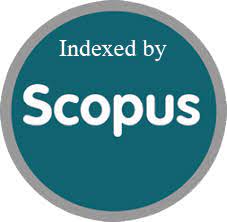Comparative Study On The Efficacy Of 70% Glycolic Acid Versus 30% Salicylic Acid Peel In The Management Of Mild To Moderate Acne Vulgaris
Keywords:
Acne vulgaris, Glycolic acid, Salicylic acid, Chemical peel, GAGSAbstract
Background: Acne vulgaris is a chronic inflammatory disorder of the pilosebaceous unit. Chemical peels such as glycolic acid (GA) and salicylic acid (SA) are popular, safe, and non-invasive treatment modalities.
Objective: To compare the clinical efficacy and tolerability of high-strength 70% GA and 30% SA peels in the management of mild to moderate acne vulgaris.
Methods: A prospective study was conducted from May 2024 to October 2024. Forty patients with mild to moderate acne (as per Global Acne Grading System - GAGS) were randomized into two groups. Group A received 70% GA peel, and Group B received 30% SA peel, with treatments administered at an interval of 2 weeks for a total of 6 sessions (12 weeks). Outcome was assessed by GAGS score and clinical photography.
Results: Group B (SA) demonstrated faster and greater GAGS score reduction (65%) compared to Group A (GA, 46%). Both treatments were well tolerated, with minor adverse events in <15% of patients.
Conclusion: Both peels were effective; however, 30% SA peel showed superior clinical response and earlier onset of action.
Downloads
References
Prevalence, morbidity, and cost of dermatological diseases. J Invest Dermatol 1979;73:395–401.
Lim JTE, Tham SN. Glycolic acid peels in the treatment of melasma among Asian women. Dermatol Surg 1997;23:177–9.
Grimes PE.The safety and efficacy of salicylic acid chemical peel in darker racial-ethnic group.Dermatol surg 1999;25;18-22.
Kessler E, Flanagan K, Chia C, et al. Comparison of alpha- and beta-hydroxy acid chemical peels in the treatment of mild to moderately severe facial acne vulgaris. Dermatol Surg. 2008;34(1):45-50.
Ilknur T, Biçak MU, Demirtaşoğlu M, Ozkan S. Glycolic acid peels versus amino fruit acid peels in the treatment of melasma. Dermatol Surg. 2010;36(4):490-495.
Downloads
Published
How to Cite
Issue
Section
License

This work is licensed under a Creative Commons Attribution 4.0 International License.
You are free to:
- Share — copy and redistribute the material in any medium or format
- Adapt — remix, transform, and build upon the material for any purpose, even commercially.
Terms:
- Attribution — You must give appropriate credit, provide a link to the license, and indicate if changes were made. You may do so in any reasonable manner, but not in any way that suggests the licensor endorses you or your use.
- No additional restrictions — You may not apply legal terms or technological measures that legally restrict others from doing anything the license permits.






